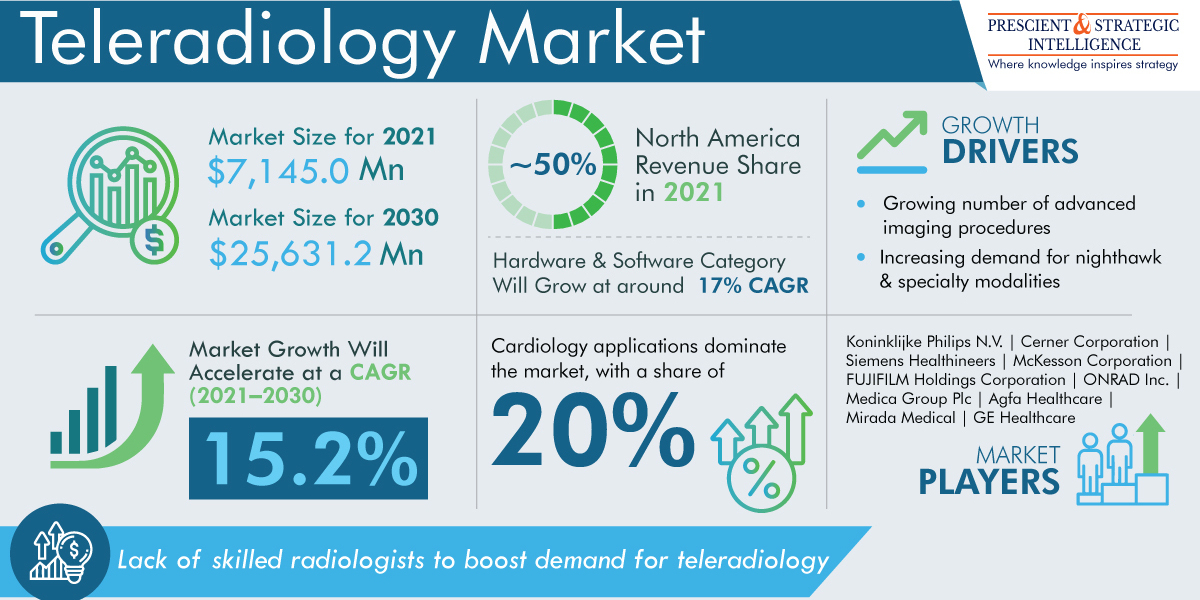The size of the teleradiology market will power at a compound annual growth rate of 15.2% by the end of this decade, and will reach USD 25,631.2 million by 2030.
This growth of the industry is due to growing number of advanced imaging procedures, shortage of skilled radiologists, and increasing demand for nighthawk & specialty modalities.
The Association of American Medical Colleges stated that the U.S. will have a physician shortage of almost 122,000 by 2032. This will create demand for teleradiology services adding to their popularity.
WHO declared that more than 3,600 million diagnostic radiological examinations are performed worldwide. This will be one of the most-important factors for the industry expansion in the years to come.
The usage of diagnostic imaging has expanded considerably due to the rising medical costs and a deeper understanding of the human anatomy through the use of ionizing radiation.
This expansion is due to the rise in the volume of CT, MRI, and other imaging procedures, including increased technology accessibility, high demand from physicians and clinicians and favourable reimbursement scenarios.
Teleradiology services are one of the latest approaches for clinics and hospitals to provide radiology consultations in remote places. Underdeveloped and developing countries have severe shortage of radiological staff and infrastructure which is driving demand for teleradiology.
Artificial intelligence has a great advantage for teleradiology reading service providers, as it can reduce the reading times, at the same time as maintaining or even improving the accuracy.
The hardware & software category will grow at the higher CAGR, around 17%, by the end of this decade. This can be credited to the growing need for healthcare software, which is why IT vendors have been working to improve interoperability, technical capabilities, and data transparency.
Cardiology applications dominated the global teleradiology market owing to the swiftly increasing incidence of CVDs. WHO stated 17.9 million people die each year from CVDs, which is about 32% of all deaths worldwide, and 85% of all CVD deaths are due to heart attacks and strokes.
CT scan demand will surge in near future as scans provide more-detailed information and speedily inspect people who may have internal injuries from road accidents or other types of traumas. A CT scan can be used to visualize nearly all parts of the body and identify disease or injury.
The North American teleradiology market held the largest share, of around 50%. The industry is expanding as a result of the availability of advanced healthcare infrastructure, reimbursement coverage for telehealth, and favourable government efforts that support digital health.
Further, other factors responsible for the growth of the industry in the region involve the technological advancements in mobile health, increasing awareness of the benefits of telehealth, and a growing focus on value-based healthcare and population health management.
With the technological advancements happening globally, diseases spreading fast and rising pollution levels leading to CVD, the industry for teleradiology will grow significantly in near future.








